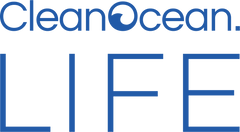
Written by Gemma Alexander
In late January 2020, Starbucks announced a commitment to become a resource-positive company – that is, a company that eliminates more greenhouse gases than it emits, and that generates more clean water than it uses.
It’s an ambitious goal with a decades-long timeline that companies have only recently begun to pursue, and none yet claim to have achieved. Without science-based targets, clear guidelines for achievement, and transparency about progress, many corporate claims about net-positive operations are just greenwashing. How does Starbucks’ commitment stack up?
Baseline Report
Many companies fail right out of the gate because they either don’t know or refuse to share, information about their actual environmental impacts.
Progress can’t be made without a baseline to measure improvement against. Starbucks seems to have accomplished this first step properly. The same week that Starbucks announced its resource-positive aspiration, it released an environmental baseline report produced in partnership with the World Wildlife Fund.
Starbucks’ report used 2018 data from the company’s global operations to calculate waste, water, and carbon footprints. They looked at the entire life cycle of their products and operations, from farming practices to packaging disposed outside of stores by customers. For calculating their carbon footprint, they followed the methodology of the World Resources Institute Greenhouse Gas Protocol.
The key findings of the report define Starbucks’ baseline for the three footprints:
- Carbon footprint: 16 million tons of greenhouse gases (GHGs) emissions
- Water footprint: 1 billion cubic meters of water used
- Waste footprint: 868 kilotons of waste generated (which also contribute 1.3 million tons of GHGs to the carbon footprint above)
Read the full article at Earth911
MORE THAN HALF OF STARBUCKS’ WASTE LEAVES THE STORES WITH CUSTOMERS. PHOTO BY OMAR LOPEZ ON UNSPLASH
Feature image by oberaichwald from Pixabay


